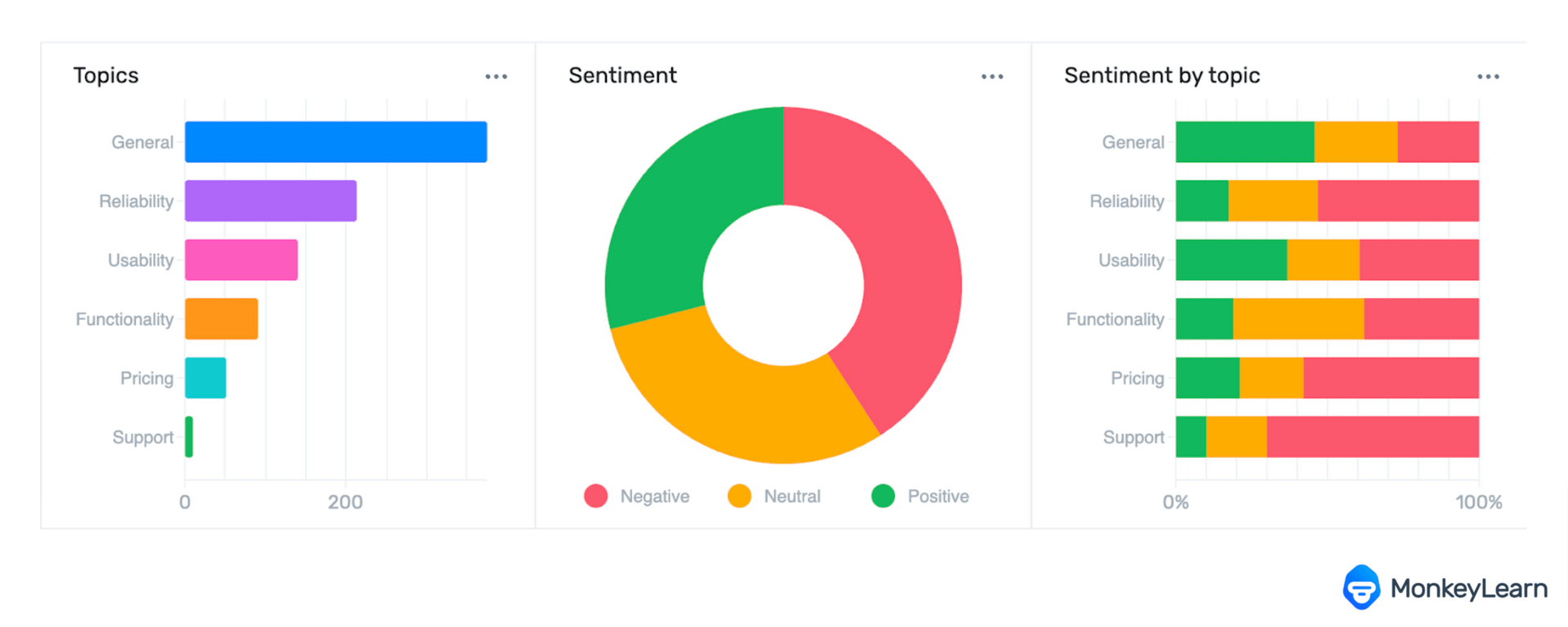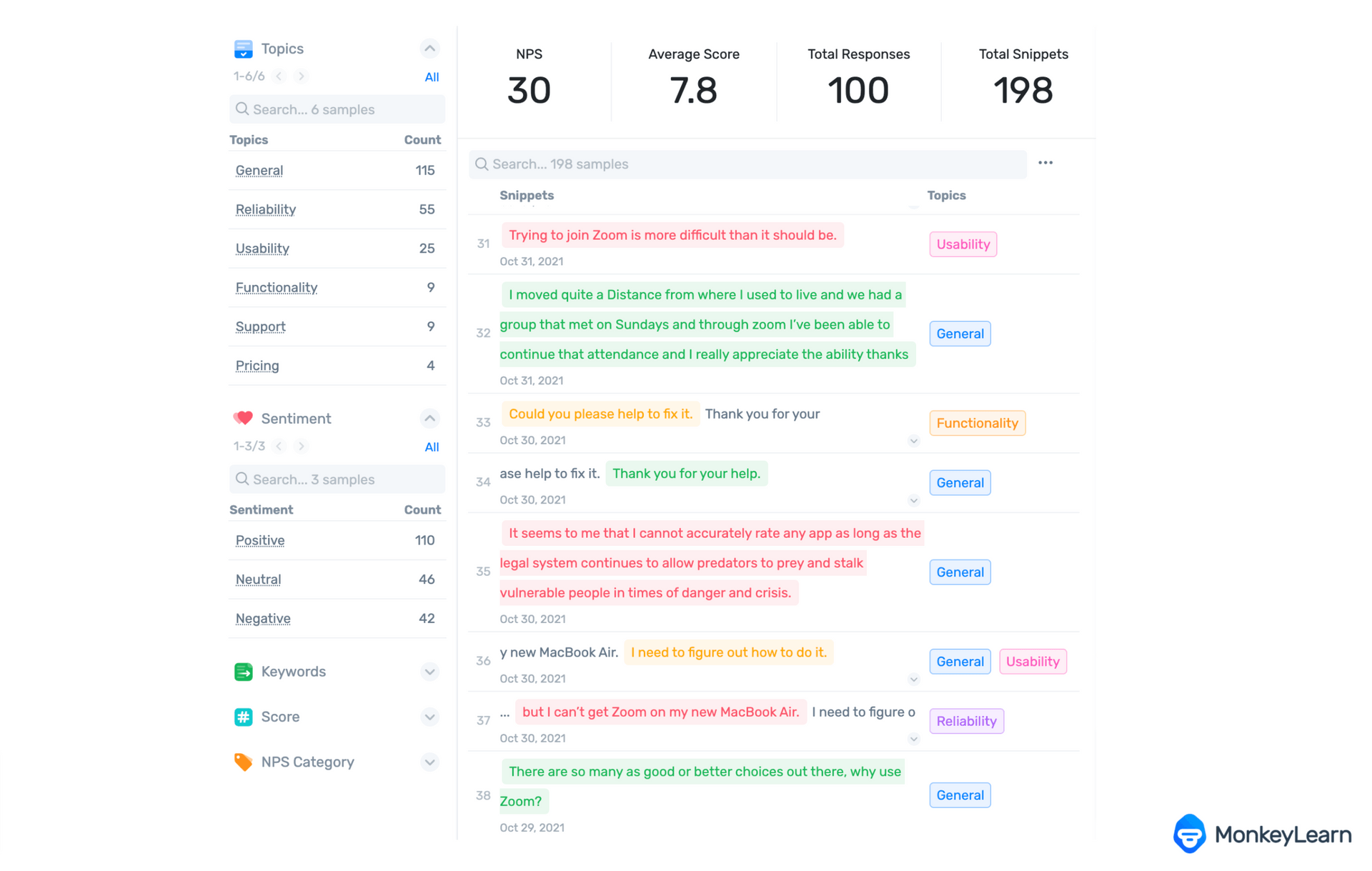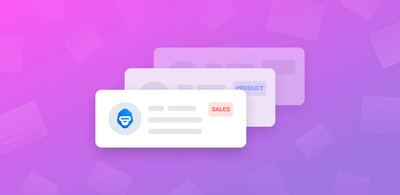Customer Needs Analysis: Do It Right in 2022

Analyzing your customers’ needs can help you truly understand what motivates your customers to buy your products or services, and set you on a path for business success.
Customers are the heart of everything you do, so you need to clearly identify their needs and expectations by extracting insights from customer feedback.
In other words, you need to back up your business actions with hard evidence.
That means no making assumptions about your customers' needs, wants and expectations.
In this article, we’ll go over what we mean by customers’ needs, and show you how you can analyze customer feedback to discover exactly what those needs are.
- What Are Customer Needs?
- Why Is It Important to Understand Customers’ Needs?
- Types of Customer Needs
- A Deep Dive into Your Customers' Needs
What Are Customer Needs?
To understand what customer needs are, ask yourself: what motivates our customers to buy a product or service?
Customer needs among your target audiences will undoubtedly vary, but their needs can often be split into two main groups: core needs and aspirational needs.
Core needs are fundamental features that a customer needs so that they stick around or buy your product in the first place. Like affordable price, user experience, good customer service, and reliability.
Aspirational needs, however, are more complex and focus on a desire to enhance their status and self-worth. They want to connect with brands, products and services that offer a 360 experience and align with their values. They may want brands to be socially responsible, support charities, or products to be locally sourced.
To understand what your customers’ needs are, you’ll need to set up a customer needs analysis program that dives deep into what your customers are saying in surveys, reviews, and other forms of open-ended customer feedback.
If you only scratch the surface of your customer feedback, you’ll miss out on very specific action items that could have a big impact on your bottom line.
For example, knowing which features, attributes, and benefits are relevant to customers can help you adapt your existing product marketing strategies, ultimately leading to higher customer retention and increased customer acquisition.
Why Is It Important to Understand Customers’ Needs?
Understanding what customers need allows you to deliver a great customer experience at every step of the buyer journey. Also, knowing what’s important to them can help you rethink the way you market your products, and focus on particular customer pain points.
Doing a customer needs analysis involves drawing insights from a variety of customer data, like customer surveys, social media posts, product reviews, and more.
When you analyze customer feedback, you can detect unmet needs and opportunities for improvement and innovation. Maybe your customers suggest a new feature that you can add to your product roadmap. Or perhaps they point out some flaws in your customer service that you need to fix.
Once you know what your customers’ needs are, you can also adapt brand messaging so that it resonates with your existing customers and potential customers.
Types of Customer Needs
Customer needs are what drive purchase decisions. When customers buy a product or service, they are trying to solve a problem. They have certain expectations, requirements, and specific things that are important to them.
Let’s take a look at some of the most common customer needs:
Price: customers want to buy products or services that adjust to their budget. They expect the price to directly reflect the value and quality of the product. But a product’s value is also determined by intangible factors, like a brand’s perceived worth and the overall customer experience. In fact, 86% of customers would pay more if that means they will get a better customer experience.
Functionality: the product or service should be able to solve a customer’s problem. There are certain features or characteristics that customers expect from a product. For example, a customer buying a gaming PC will probably look for a fast central processing unit (CPU), a powerful graphic card, and lots of storage space.
Usability: this is related to the way a product is designed and the experience it provides to the customer. Users tend to prefer products with a short learning curve, that are easy to use, and help them accomplish tasks in a seamless way. For instance, customers expect a mobile app to be intuitive, error-free, and easy to navigate.
Reliability: the product has to be able to perform its function consistently over time, without failure. Reliability can be also defined as “quality over time.” A company that makes reliable products will have a positive reputation and high levels of customer satisfaction.
Support: customers crave good customer service. They expect to reach out to customer support through the channel of their choosing to get fast, personalized responses; and be treated with empathy. When it comes to buying a SaaS solution, a poor customer experience relates directly to customer churn.
Security: when they interact through digital channels, customers want to ensure that their transactions are safe, their personal data is protected, and their information will not get lost. Getting an error message after entering your credit card information on an e-commerce site, for example, would definitely turn customers away.
Effectiveness: customers buy a product or service because they want to solve a problem. So, their main interest is buying something that actually does the job it advertises.
A Deep Dive into Your Customers’ Needs
A customer needs analysis should provide insight into your customer’s pain points and challenges. It can inform all of your internal teams ‒ from sales and marketing to customer support ‒ to create data-driven strategies to improve your business.
Here’s how to perform a customer needs analysis in 5 steps:
- Gather data from your customers
- Choose the right tools
- Analyze customer feedback
- Visualize customer needs and pain points
- Align product / service with customer needs
1. Gather data from your customers
Engage with your customers and ask them for feedback. Depending on the type of business you have, choose the best channel to send surveys, whether it’s via email, phone, SMS, or website pop-ups.
Take time to carefully plan your survey, and make sure to include open-ended questions so your customers can go into more detail. Online survey tools, like SurveyMonkey, Typeform, and Google Forms make creating and sending surveys easy.
You can also collect unsolicited customer feedback, like social media posts mentioning your brand, online product reviews, and more. The opinions that customers spontaneously share online are key to learning how they think and feel about your brand.
Finally, you can gather data from customer emails and chats with your customer support reps or from CRM platforms, like Zendesk and Freshdesk.
2. Choose the right tools
So, you’ve collected customer feedback. Now, you have this huge amount of unstructured data – all the free text data containing your customers’ opinions – that you’ll need to organize. Sorting all this data comes down to two options:
- Manually tagging all your customer data
- Automating the process with machine learning
Manually tagging feedback is time-consuming, tedious, and prone to error and inaccuracies. Machine learning tools, on the other hand, provide fast and consistent results no matter the size of your dataset.
MonkeyLearn is a machine learning platform that can help you analyze customer feedback to uncover customer pain points, previously unknown customer needs, and missing points on the customer journey.
Which brings us onto the next step: analyzing your customer feedback with MonkeyLearn.
3. Analyze customer feedback
Sorting your data into categories helps you gain an overview of the topics that are mentioned most often in customer feedback. For example, you may learn that a lot of your customers make comments about a particular product feature.
But how do you know how customers actually feel about this topic?
Using text anlysis tools you can run your customer feedback through various text analysis techniques – simultaneously – so you can really drill down into what your customers are saying and gain detailed customer insights.
For example, sentiment analysisautomatically identifies if a piece of feedback expresses a positive, negative, or neutral emotion. And when combined with topic classification, you can find out which topics are being mentioned in a positive or negative way.
Then, if you want to hone in on the details and find out why customers are happy or unhappy, or what they need from your products, you can start extracting keywords to detect the main words that customers use when they talk about your product.
This provides an extra layer of insight to help you further understand customer needs.
Want to learn how to perform all three of these analysis techniques on your customer data, without entering a single line of code?
Discover MonkeyLearn templates.
MonkeyLearn’s templates allow you to upload your data. Then, our powerful AI automatically runs your data through all these analysis techniques.
See for yourself using our NPS template, which helps you pinpoint what Promoters, Passives, and Detractors love or loathe about your software products in their open-ended responses.

Let’s take a closer look at our NPS analysis template.
This template analyzes customer feedback by:
- Sentiment analysis (Positive, Neutral, Negative)
- Topic classification (Features, Usability,Reliability, Support, Pricing, etc)
- Keyword extraction
1. Choose NPS template to create your workflow

2. Upload your data

If you don't have a CSV file:
You can use our sample dataset.
Or, download your own survey responses from the survey tool you use with this documentation.
3. Match your data to the right fields in each column

Fields:
- created_at: Date that the response was sent.
- text: Text of the response.
- score: NPS score given by the customer.
4. Wait for MonkeyLearn to process your data

5. Explore your dashboard! (see next step)
4. Visualize customer data
Once the NPS analysis template has run your data through the analysis, you'll get a detailed dashboard, so you can quickly detect which topic is driving your NPS up or down.

Want to see your customer data in a dashboard like this?
Get your own personalized demo.
In your dashboard, you can filter by sentiment, topic, keyword and more.
Quickly track overall sentiment, topic distribution and sentiment by topic…

…Or, slice and dice comments by sentiment, topics and keywords. Highlight relevant snippets of text by sentiment, and find the actionable insights in your data that can directly impact your NPS.

Data visualization is essential when it comes to sharing the findings of your customer needs analysis with your internal teams and stakeholders.
With MonkeyLearn, you can synthesize your data in one place, making it easier to understand and draw conclusions. And you can share your dashboard by clicking on the ‘share’ button in the top right-hand corner.
5. Align product / service with customer needs
A customer needs analysis examines if your business is meeting customer needs and shows opportunities to improve your product or service.
The results of your analysis should drive your internal teams in the right direction, by providing solid evidence for them to make informed decisions.
Maybe you find out that customers are not using your SaaS product to the fullest, because they find some of your features too confusing. Your product team can use this data to create a better user experience and improve product usage. Also, your sales team can offer new customers a demo, so they can learn more about the product and how it can help them.
Identify Customer Needs With Machine Learning Tools
A customer needs analysis sheds light on some fundamental questions:
- What problems are your customers trying to solve?
- What aspects of your product or service do they value the most?
- How are you helping them achieve their goals?
By analyzing customer feedback, such as survey responses or product reviews, you can learn what customers expect from your brand and what you need to improve to stay on top of their requests and requirements.
With the help of machine learning tools, you can make sense of qualitative data in a fast and cost-effective way. MonkeyLearn provides an all-in-one solution that allows you to analyze text using no-code tools and create striking visualizations to share with your internal teams.
Take your customer needs analysis to a new level with machine learning.

Inés Roldós
December 10th, 2020





